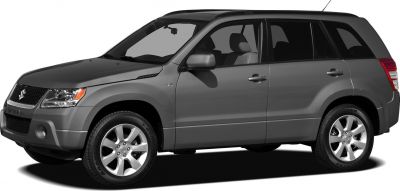 2002 Kia Sorento I Dimensions, Size & Specs
2002 Kia Sorento I Dimensions, Size & SpecsMeasurements of the 2002 Kia Sorento I, engineered for optimal performance and comfort
| Dimensions | |
|---|---|
| Length: | 4567 mm179.8 in15.0 ft |
| Width: | 1857 mm73.1 in6.1 ft |
| Height: | 1730 mm68.1 in5.7 ft |
| Trunk Capacity: | 890 liter31.4 cu ft |
| Trunk Capacity (Max): | 1900 liter67.1 cu ft |
| Weight Specifications | |
| Curb Weight: | 1865-1985 kg4112-4376 lbs |
| Maximal permitted Weight: | 2455-2610 kg5412-5754 lbs |
| Tire Specifications | |
| Rims Size: |
|
| Tire Sizes: |
|
The Kia Sorento I, produced between 2002 and 2006, is a well-rounded mid-size SUV that marked Kia's strong entry into the SUV market. Measuring 4567 mm (179.8 inches) in length, 1857 mm (73.1 inches) in width, and standing 1730 mm (68.1 inches) tall, the Sorento I offers impressive road presence and passenger space for its class. This SUV features a curb weight ranging from 1865 to 1985 kilograms (4113 to 4375 pounds), reflecting a sturdy build optimized for family utility and off-road use. The maximum weight capacity varies between 2455 to 2610 kilograms (5412 to 5754 pounds), allowing for substantial payload and towing capabilities. One standout feature of the Sorento I is its generous luggage space; with all seats in place, it provides 890 liters (31.4 cubic feet) of cargo capacity. This expands dramatically to 1900 liters (67.1 cubic feet) with the rear seats folded down, catering to larger cargo and adventure needs. The SUV rides on 16-inch rims and supports tire sizes such as 225/75 R16 and 245/70 R16, balancing off-road traction with on-road comfort. The Kia Sorento I's dimensions and versatility made it a competitive choice in the early 2000s SUV segment, appealing to drivers seeking a combination of style, space, and practical utility.
Discover the standout features that make the 2002 Kia Sorento I a leader in its class
Have a question? Please check our knowledgebase first.
The Kia Sorento I, produced from 2002 to 2006, has a length of 4567 mm (179.7 inches), a width of 1857 mm (73.1 inches), and a height of 1730 mm (68.1 inches). These dimensions place it firmly in the mid-size SUV category, offering a balanced combination of interior space and manageable exterior size for urban and off-road use.
The Kia Sorento I's curb weight ranges from 1865 to 1985 kg (4114 to 4375 lbs), depending on the specific trim and equipment. Its maximum permissible weight varies between 2455 and 2610 kg (5413 to 5753 lbs), allowing for ample passenger and cargo load capacity while maintaining safety and handling characteristics typical for mid-size SUVs.
The Kia Sorento I provides a practical luggage space with a capacity of 890 liters (31.4 cubic feet) when the rear seats are in normal use. Folding the rear seats down expands this capacity significantly to 1900 liters (67.1 cubic feet), making it highly versatile for transporting larger items or extensive cargo, which is particularly useful for families and outdoor adventures.
Yes, the Kia Sorento I typically fits into a standard home garage. Standard garage dimensions generally range around 6 meters (20 feet) in length and 3 meters (10 feet) in width. With its 4567 mm (179.7 inches or roughly 15 feet) length and 1857 mm (73.1 inches or 6.1 feet) width, the Sorento I should comfortably fit into most residential garages without difficulty.
As the first-generation Sorento debuted in 2002, it doesn’t have a direct predecessor in Kia’s lineup. Compared with similar mid-size SUVs of the early 2000s, such as the Toyota RAV4 or Ford Escape, the Sorento I is generally longer and taller, offering more interior and cargo space. Its 4567 mm length and 1730 mm height give it a slightly more commanding presence and greater interior volume, appealing to buyers needing both urban usability and off-road capability.
The Kia Sorento I came standard with 16-inch rims, paired mainly with tire sizes 225/75 R16 and 245/70 R16. These tires are well suited for the SUV’s intended use, providing a balance between on-road comfort and off-road traction. The choice of tire width and profile reflects its rugged SUV nature, aiming for stability and durability across different terrains.
The interior of the Sorento I is spacious for its class with a practical layout that caters to families and outdoor enthusiasts. With a luggage capacity of 890 liters (31.4 cubic feet) and up to 1900 liters (67.1 cubic feet) with the rear seats folded, it surpasses many competitors in storage flexibility. Its overall height and width contribute to good headroom and shoulder room, providing comfort on both short and long drives compared to contemporaries.
The Sorento I’s height of 1730 mm (68.1 inches) helps enhance its off-road capability by providing better ground clearance, which is beneficial for uneven terrain and obstacles. However, while the increased height improves visibility and ruggedness, it may require slightly more attention when parking in low-clearance garages or tight urban spaces, though it generally remains manageable due to its balanced dimensions.
The Kia Sorento I has a maximum permissible weight rating ranging between 2455 and 2610 kg (5413 to 5753 lbs). This rating indicates the combined weight limit of the vehicle itself plus passengers, cargo, and any additional equipment. This substantial capacity ensures the vehicle can handle full passenger loads and a heavy cargo without compromising safety or performance, making it well-suited for family use and utility purposes.
Compared to its successor, the second-generation Kia Sorento (introduced in 2009), the first-generation Sorento I is generally smaller in overall dimensions and curb weight. The newer generation typically offers increased length, width, and height to improve passenger comfort and cargo space, along with a slightly heavier build due to added features and safety equipment. Despite being smaller, the Sorento I remains competitive with its practical size and solid capability for the early 2000s SUV market.
Discover similar sized cars.

| Production: | 2007-2011 |
|---|---|
| Model Year: | 2007 |
| Length: | 4544-4584 mm178.9-180.5 in |
| Width: | 1857 mm73.1 in |
| Height: | 1755-1778 mm69.1-70.0 in |

| Production: | 2018-2021 |
|---|---|
| Model Year: | 2018 |
| Length: | 4585 mm180.5 in |
| Width: | 1890 mm74.4 in |
| Height: | 1785 mm70.3 in |

| Production: | 2015-2017 |
|---|---|
| Model Year: | 2015 |
| Length: | 4585 mm180.5 in |
| Width: | 1890 mm74.4 in |
| Height: | 1785 mm70.3 in |

| Production: | 2021-present |
|---|---|
| Model Year: | 2022 |
| Length: | 4490 mm176.8 in |
| Width: | 1780 mm70.1 in |
| Height: | 1651-1685 mm65.0-66.3 in |

| Production: | 2021-2024 |
|---|---|
| Model Year: | 2022 |
| Length: | 4500 mm177.2 in |
| Width: | 1790 mm70.5 in |
| Height: | 1675 mm65.9 in |

| Production: | 2012-2015 |
|---|---|
| Model Year: | 2013 |
| Length: | 4035-4500 mm158.9-177.2 in |
| Width: | 1810 mm71.3 in |
| Height: | 1695 mm66.7 in |

| Production: | 2021-present |
|---|---|
| Model Year: | 2021 |
| Length: | 4620 mm181.9 in |
| Width: | 1910 mm75.2 in |
| Height: | 1780 mm70.1 in |

| Production: | 2020-2023 |
|---|---|
| Model Year: | 2020 |
| Length: | 4620 mm181.9 in |
| Width: | 1890 mm74.4 in |
| Height: | 1780 mm70.1 in |
